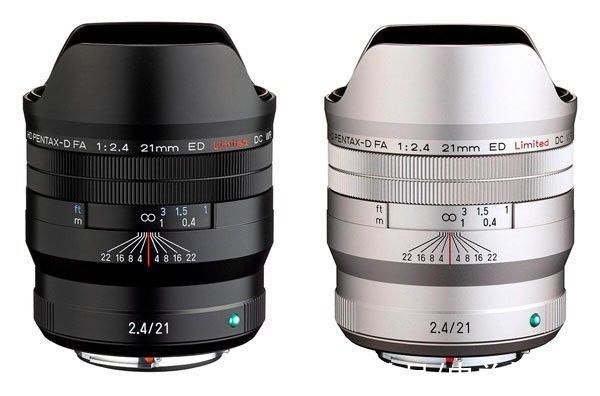Android自定义物流进度布局StepProgressLayout
一、实际项目效果图 
文章图片
效果图.png 二、效果分析 
文章图片
效果分析.png
- 条目有三种样式:第一条、中间部分、最后一条
- 一个条目分成三个部分,二条线加一个图标
- 图标大小有二种样式
- 二条线均可以设置显示或者隐藏
四、自定义(R.layout.layout_view_step)布局样式
- 布局很简单,自己看看就行
- 对于ConstraintLayout 不会用的自己去百度
package cn.carhouse.yctone.view;
import android.content.Context;
import android.content.res.TypedArray;
import android.graphics.Color;
import android.util.AttributeSet;
import android.util.TypedValue;
import android.view.View;
import android.widget.ImageView;
import androidx.annotation.NonNull;
import androidx.annotation.Nullable;
import androidx.constraintlayout.widget.ConstraintLayout;
import cn.carhouse.yctone.R;
/**
* 物流进度的View
*/
public class StepProgressLayout extends ConstraintLayout {
private int mFirstImage;
private int mFirstImageSize;
private int mNormalImage;
private int mNormalImageSize;
private int mLineSize;
private int mLineColor = Color.parseColor("#e6e6e6");
private int mFirstLineHeight, mNormalLineHeight;
private int mStepStyle = STYLE_NORMAL;
// 进度样式
private static final int STYLE_FIRST = 0;
//第一个条目样式
private static final int STYLE_NORMAL = 1;
//正常条目样式
private static final int STYLE_END = 2;
//最后一条条目样式private View mTopLine, mBottomLine;
private ImageView mIcon;
public StepProgressLayout(@NonNull Context context) {
this(context, null);
}public StepProgressLayout(@NonNull Context context, @Nullable AttributeSet attrs) {
this(context, attrs, 0);
}public StepProgressLayout(@NonNull Context context, @Nullable AttributeSet attrs, int defStyleAttr) {
super(context, attrs, defStyleAttr);
// 加载布局
inflate(context, R.layout.layout_view_step, this);
// 加载自定义的属性
obtainStyledAttributes(context, attrs);
// 初始化View
initViews();
}private void obtainStyledAttributes(Context context, AttributeSet attrs) {
TypedArray array = context.obtainStyledAttributes(attrs, R.styleable.StepProgressLayout);
mFirstImage = array.getResourceId(R.styleable.StepProgressLayout_step_first_image, 0);
mFirstImageSize = (int) array.getDimension(R.styleable.StepProgressLayout_step_first_image_size, dip2px(20));
mNormalImage = array.getResourceId(R.styleable.StepProgressLayout_step_normal_image, 0);
mNormalImageSize = (int) array.getDimension(R.styleable.StepProgressLayout_step_normal_image_size, dip2px(11));
mLineSize = (int) array.getDimension(R.styleable.StepProgressLayout_step_line_size, 1);
mLineColor = array.getColor(R.styleable.StepProgressLayout_step_line_color, mLineColor);
mFirstLineHeight = (int) array.getDimension(R.styleable.StepProgressLayout_step_first_line_height, dip2px(17));
mNormalLineHeight = (int) array.getDimension(R.styleable.StepProgressLayout_step_normal_line_height, dip2px(17));
array.recycle();
}private void initViews() {
mTopLine = findViewById(R.id.step_top_line);
mBottomLine = findViewById(R.id.step_bottom_line);
mIcon = findViewById(R.id.iv_icon);
if (mStepStyle == STYLE_FIRST) {
setImageResource(mFirstImage);
setImageSize(mFirstImageSize);
mTopLine.setVisibility(INVISIBLE);
} else if (mStepStyle == STYLE_NORMAL || mStepStyle == STYLE_END) {
setImageResource(mNormalImage);
setImageSize(mNormalImageSize);
if (mStepStyle == STYLE_END) {
mBottomLine.setVisibility(INVISIBLE);
}
}
setTopLineHeight(mFirstLineHeight);
setLineColor(mLineColor);
setLineSize(mLineSize);
}public void setLineColor(int color) {
if (color != 0) {
mBottomLine.setBackgroundColor(color);
mTopLine.setBackgroundColor(color);
}
}/**
* 设置第一条线第一个条目的高度
*/
public void setFirstLineHeight(int height) {
this.mFirstLineHeight = height;
}/**
* 设置第一条线正常样式的高度
*/
public void setNormalLineHeight(int height) {
this.mNormalLineHeight = height;
}public void setTopLineHeight(int height) {
if (height != 0) {
ConstraintLayout.LayoutParams params = (ConstraintLayout.LayoutParams) mTopLine.getLayoutParams();
params.height = height;
mTopLine.setLayoutParams(params);
}
}/**
* 设置线的大小
*/
public void setLineSize(int width) {
this.mLineSize = width;
if (this.mLineSize != 0) {
ConstraintLayout.LayoutParams params = (ConstraintLayout.LayoutParams) mTopLine.getLayoutParams();
params.width = width;
mTopLine.setLayoutParams(params);
params = (ConstraintLayout.LayoutParams) mBottomLine.getLayoutParams();
params.width = width;
mBottomLine.setLayoutParams(params);
}
}/**
* 设置第一个图片资源
*/
public void setHeadImageSize(int size) {
this.mFirstImageSize = size;
setImageSize(this.mFirstImageSize);
}private void setImageResource(int resource) {
if (resource != 0) {
mIcon.setImageResource(resource);
}
}private void setImageSize(int size) {
if (size >= 0) {
ConstraintLayout.LayoutParams params = (ConstraintLayout.LayoutParams) mIcon.getLayoutParams();
params.height = size;
params.width = size;
mIcon.setLayoutParams(params);
}
}/**
* 变成第一个条目样式
*/
public void changeFirstStyle() {
if (mStepStyle != STYLE_FIRST) {
mStepStyle = STYLE_FIRST;
mTopLine.setVisibility(INVISIBLE);
setImageResource(mFirstImage);
setHeadImageSize(mFirstImageSize);
setTopLineHeight(mFirstLineHeight);
}
}/**
* 变成正常条目样式
*/
public void changeNormalStyle() {
if (mStepStyle != STYLE_NORMAL) {
mStepStyle = STYLE_NORMAL;
mBottomLine.setVisibility(VISIBLE);
mTopLine.setVisibility(VISIBLE);
setImageResource(mNormalImage);
setImageSize(mNormalImageSize);
setTopLineHeight(mFirstLineHeight);
}
}/**
* 最后一种样式
*/
public void changeEndStyle() {
if (mStepStyle != STYLE_END) {
mStepStyle = STYLE_END;
mTopLine.setVisibility(VISIBLE);
mBottomLine.setVisibility(INVISIBLE);
setImageResource(mNormalImage);
setImageSize(mNormalImageSize);
setTopLineHeight(mFirstLineHeight);
}
}private int dip2px(int dip) {
return (int) (TypedValue.applyDimension(TypedValue.COMPLEX_UNIT_DIP, dip, getResources().getDisplayMetrics()) + 0.5);
}
}【Android自定义物流进度布局StepProgressLayout】提供了一些常用方法,每个公司的UI布局不一样,自己稍作调整就好。
六、列表条目(R.layout.supplier_item_express_track_item)布局技巧
用底部的线来约束限制左边自己定义View的高度七、列表Adapter测试代码
mRecyclerView.setAdapter(new XQuickAdapter(getAppActivity(), items, R.layout.supplier_item_express_track_item) {
@Override
public void convert(XQuickViewHolder holder, String item, int position) {
StepProgressLayout step = holder.getView(R.id.step_view);
TextView tvName = holder.getView(R.id.tv_name);
TextView tvTime = holder.getView(R.id.tv_time);
// 第一个位置
if (position == 0) {
step.changeFirstStyle();
holder.setBold(tvName, true);
holder.setBold(tvTime, true);
tvName.setTextColor(Color.parseColor("#FFDD2828"));
tvTime.setTextColor(Color.parseColor("#FFDD2828"));
} else {
// 最后一个位置
if (position == getCount() - 1) {
step.changeEndStyle();
} else {
step.changeNormalStyle();
}
holder.setBold(tvName, false);
holder.setBold(tvTime, false);
tvName.setTextColor(Color.parseColor("#FFAAAAAA"));
tvTime.setTextColor(Color.parseColor("#FFAAAAAA"));
}
}
});
- 看convert方法里面的逻辑就好,实际开发用自己的Adapter
- 源码:https://github.com/wenkency/views
推荐阅读
- android第三方框架(五)ButterKnife
- Android中的AES加密-下
- 带有Hilt的Android上的依赖注入
- SpringBoot调用公共模块的自定义注解失效的解决
- python自定义封装带颜色的logging模块
- 列出所有自定义的function和view
- android|android studio中ndk的使用
- Android事件传递源码分析
- RxJava|RxJava 在Android项目中的使用(一)
- Android7.0|Android7.0 第三方应用无法访问私有库














